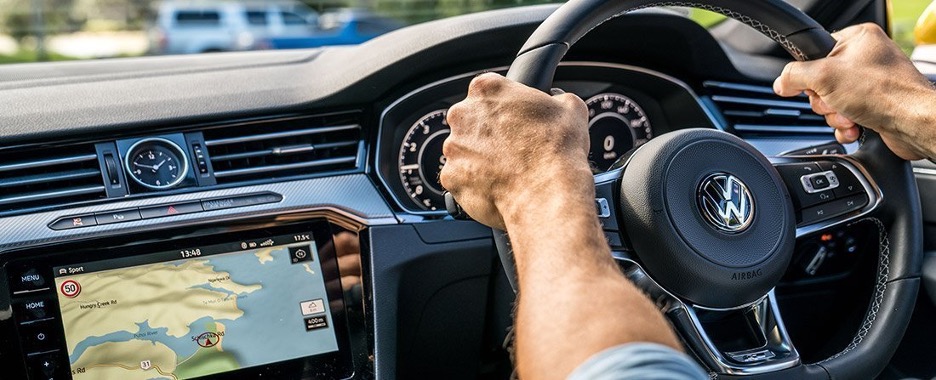Luxury cars are brimming with cutting-edge connectivity capabilities, autonomous driving options, and the newest powertrain electrification technology, in addition to the standard comfort, convenience, entertainment, and safety features to automobiles. The automotive industry is currently centered on the luxury segment. The features that are included as standard equipment in new cars are those that previous owners and drivers found to be the most useful.
If talk about the Automation Factor, then automobiles have become more convenient and easily accessible for doing automatic tasks effectively. Automakers educate automobile buyers to think of them as brands that provide more than the popular brands as a notch above the ordinary, and that is frequently the case through advertising and marketing. Additionally, they possess some of the strongest brands in the sector. A feature needs to be standard in order to prevent the numerous problems that might arise in an automobile today.
What should be included as basic features in automobiles?
Engines, transmissions, sound systems, telematics, safety features, and interior materials are frequently of greater quality in luxury cars, and they are also equipped with more luxuries. Additionally, they might have better body materials, improved sound insulation, and steel-free components made of aluminum or carbon fiber.
If you purchase a vehicle without airbags, you will not be protected in the event of a collision. Even with brand-new cars that have received security certification, safety is a top priority. Some contemporary features are so beneficial that we believe they ought to be transferred from more expensive vehicles to their more affordable competitors.
The time when a touchscreen infotainment system was viewed as an ostentatious addition that was out of reach for most consumers is long gone. Advertisement and marketing are also used by vehicle manufacturers to cultivate a perception of their brands as superior to the rest of the pack, and that is often the case.
Interior and External impacts of designing on overall beauty:
When we think about gorgeous automotive designs, we immediately imagine their exteriors. It’s common knowledge that a good-looking exterior is the first step to arousing customers’ interest. A quick glimpse at the car’s enticing exterior prompts a strong desire to jump into the driver’s seat. Rich, art-deco-inspired materials like wood, leather, and gleaming metal were frequently employed.
Interestingly, these materials are still the go-to palette for premium interior design today. Considering that we spend the vast majority of our waking hours in our cars, this tactile touch has a significant impact on our perception of the vehicle. Interiors of automobiles, like their exteriors, have progressed rapidly from strictly functional places to havens of style, comfort, and extravagance.
Materials such as wood, leather, and glittering metal were used frequently in the art deco style. Indeed, these materials remain popular in high-end interior design. Interiors of automobiles began to mimic recording-studio workstations as digital displays, and graphic equalizers became commonplace. Over the next several decades, the accumulation of buttons, controls, and displays would become the unapologetically elitist symbol of success.
Antilock Braking System:
In the last few years, ABS has made its way into the hatchback market. However, one must pay the price for the benefit of preventing a car’s wheels from locking up when braking in an emergency. ABS basically allows the driver to steer and veer the vehicle away from danger even when the brakes are applied aggressively.
This is a significant benefit of an ABS-equipped vehicle. Remember that just because a vehicle has anti-lock brakes does not mean it is safe. As a result, exercise caution while driving.
Adjustable Steering Wheel:
Customizing one’s car’s interior is a dream for many people. Seating and steering positions in most vehicles are based on the average driver. This setting disadvantages shorter and taller drivers but can be remedied with steering modifications. The rake setting of a steering wheel adjustable for reach can be used to lower or raise the steering wheel.
Traction control management system:
With traction control, the ABS monitors and adjusts for wheel slippage. Speed sensors are installed on each wheel to keep track of the vehicle’s speed. Whenever the system detects that one of the vehicle’s wheels is turning faster than the other, it pulses the brake on the faster-turning wheel to shift power from the slower-turning wheel to the wheel with greater traction. Driving in slick conditions and getting off from a stop can be a challenge without the use of traction control.
Role of Airbags and Quick Blow:
In recent years, airbags have become more commonplace in low-cost vehicles. Airbags are deployed in the event of a collision thanks to sensors attached to the vehicle’s onboard computer. The airbag immediately inflates to protect passengers from being struck by the dashboard, steering wheel, or windshield during a collision.
Side airbags lessen the danger of occupants being injured in a side collision. Despite the fact that airbags are optional, we strongly advise their use.
Must Read: Look Out for the Best SUVs Under 20 Lakhs in India 2021
Reverse Sensing System:
There are others who sneer and say that if you are unable to back up your vehicle securely, you should not be behind the wheel at all. A reversing system is preferable in large cities with hectic parking lots and unreliable attendants. The driver is alerted if the car gets too close to an item, thanks to a proximity sensor located in the back of the vehicle.
When you put your vehicle in reverse, the mechanism kicks in automatically. Obstacles are detected by bouncing back ultrasonic radio waves from small sensors. As the car gets closer to the target, the beeper gets louder.
Enable intelligent systems by employing advanced analytics:
This will be critical to the success of driverless automobiles and networked roadways when they become commonplace in the near future. Autonomous vehicles rely on the ecosystem’s interconnection and the ability to exchange real-time data with other vehicles, sensors, and microprocessors to function. Here, Big Data analytics comes in.
Data analytics and modeling tools are necessary for the sensors’ collection, processing and transmission to and from various third-party systems. It is possible to forecast the future using machine learning and predictive models, which assist smart cars avoid collisions and traffic accidents. Vehicles must connect with sensors on the roadside and smart signaling systems in order to improve traffic management on smart highways, which have emerged in recent years.
For example, the Department of Transportation in different countries spends a huge amount to help the winning city of the Smart City Challenge establish and implement its smart city projects and integrate cutting-edge technologies. Connected vehicles, driverless autos, and smart sensors will all be included in the city’s transportation system.
To stay on course, strike a balance between safety and progress.
Smart automobiles of the future will change the way people get around. In a recent study, researchers found that shared autonomous vehicles might save 15% to 20% of city space. Road safety, congestion, and carbon emissions are all expected to be greatly improved by the introduction of smart automobiles. However, these cars also bring with them a slew of data security risks.
Hackers may possibly open the doors of two million vehicles thanks to a flaw that has subsequently been fixed. The safety of vehicles can be jeopardized by such cyber security concerns. In order to make sure that smart cars live up to their promise and potential, it is vital that vulnerabilities are identified and addressed early in the development cycle.
What is Advanced Driver Assistance Systems (ADAS) Technology? How Does It Work?
Head-up display for augmented reality:
The functionality of an automobile would greatly increase if it had an augmented reality display on the windscreen. With basic designs on our windscreens, we could display data such as speed, navigational information, and even the name of an incoming call. Although it appears to operate in some situations—for example, when the environment is too bright for the information to be readily visible on your windscreen—it obviously doesn’t in others.
Definitely, a feature of the future that we should anticipate is head-up displays. Providing us with all the necessary information without requiring us to look at a center console display or our cellphones will let us keep our eyes on the road.
Must Read: ADAS Technology of Mahindra XUV700 Explained by ExpertatEverything
Integration with Smartphones and other Updates:
Although Android users can access several features (Google Now, Maps) by mounting their Android smartphones onto their car windscreens, it would be wonderful to have a system that is connected to the car dashboard and allows for the use of buttons on the steering wheel. LTE would make it possible to listen to higher-quality internet radio, use images to find a location, and load live maps more quickly.
As some of you may know, built-in GPS systems (in cars) function without a connection to the Internet. But wouldn’t it be fantastic if we could also receive real-time traffic updates in addition to our regular GPS navigation? However, in order to achieve that, an Internet connection would be necessary, and many cars still do not support this.
Final Thoughts:
We’ve come a long way in our understanding of what cars can and can’t be equipped with. Nevertheless, some of the more advanced features that we’ve looked at can be quite expensive. There aren’t many vehicles on the market where the only difference between one model and the next higher one is any of the following features. The good news is that as technology improves and gets more affordable, it will be possible to put all of these cutting-edge capabilities into cars of all price ranges.





